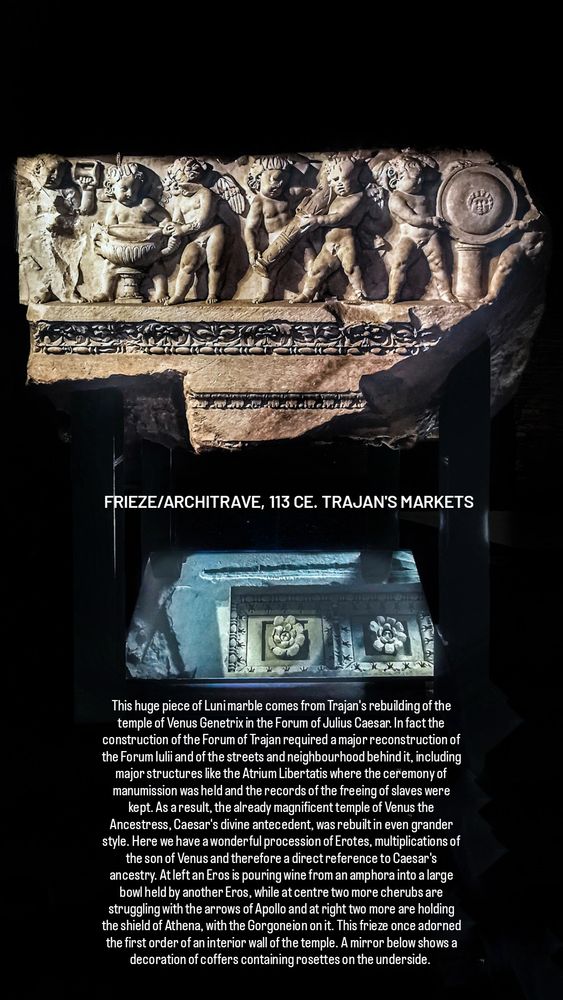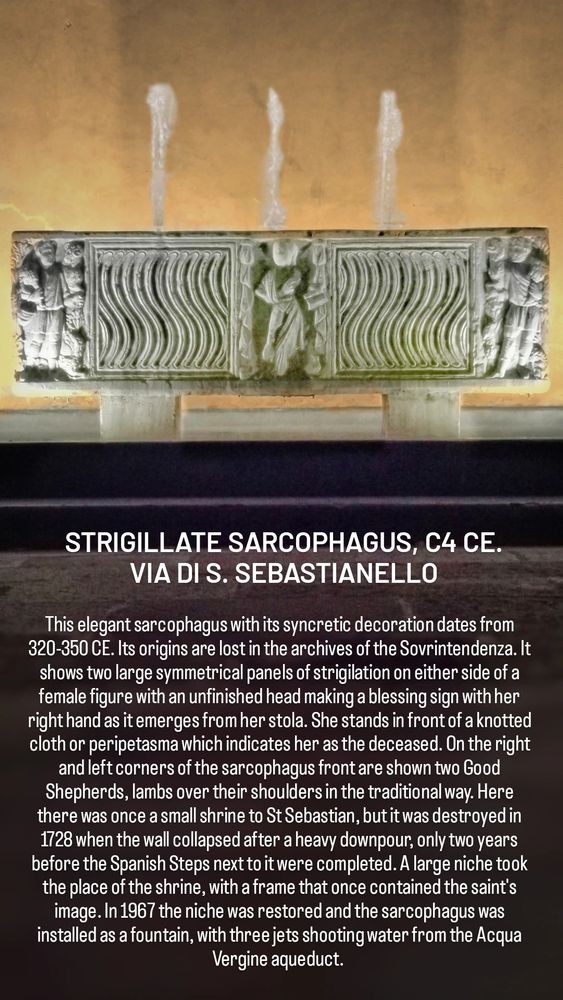Anthony Majanlahti
@anthonymajanlahti.bsky.social
890 followers
82 following
760 posts
Historian living in Rome. 🏳️🌈Author of "The Families who Made Rome, a history and a guide" (Chatto, 2004). Currently writing a single-volume urban history of Rome for OUP.
The ALT text reproduces the text written on the images I post.
Posts
Media
Videos
Starter Packs


![FUNERARY INSCRIPTION OF M. CLAUDIUS, C. 25-1 BCE. BATHS OF DIOCLETIAN
M(arcus) Claudius M(arci) F(ilius) scr(ibarum) mag(ister) q(uaestorum) et aed(ilium) cur(ulium). Arbitratu
Philarguri maioris l(iberti)
"Marcus Claudius, son of Marcus, President of the association of scribes for the quæstors and Curule ædiles. [This was set up] by the direction of Philargurus, senior freedman (of Claudius)". This large, almost completely intact block of marble was found along the via Casilina about 12 km outside the city walls. It records one of the army of apparitores or "assistants", a class of public servants amounting to a nascent bureaucracy by the end of the C2 BCE. There were four colleges of apparitores, namely, in ascending order of prestige, the præcones or heralds, the lictores or bodyguards of magistrates, the viatores or messengers, and the scribæ, responsible for taking and keeping public records. This Marcus Claudius, son of Marcus (the designation indicates that he was a freeborn citizen) was one of the scribæ working for the quæstors and curule ædiles, one of the bigger cogs in the vast imperial machine.](https://cdn.bsky.app/img/feed_thumbnail/plain/did:plc:y2ps7or6drwz3yuvelv6glai/bafkreiem2feww6xw5ywwmzqgybnnms72zz4z7cskxagja3he3qf7pmyalm@jpeg)







![LAPIS SATRICANUS, C7 BCE. BATHS OF DIOCLETIAN
[3 or 4 letters missing] IEISTETERAI POPLIOSIO VALESIOSIO / SVODALES MAMARTEI
This slab of tufo comes from the acropolis of the ancient town of Satricum, founded by the Latins according to Livy, but subsequently taken by the Volsci and then a military flashpoint between the Romans and the local tribes for much of the middle Republic. The town was destroyed twice, sparing only the temple of Mater Matuta. This stone slab was sliced from a monumental base, perhaps for a statue group, and reused in a late C6/early C7 BCE restoration of the foundations of the temple. The inscription has been the subject of lively debate, especially over the first letters. These two lines refer to the "suodales Mamartei" (=sodales Martis) or soldiers under one Poplios Valesios (=Publius Valerius in classical Latin) via the archaic genitive Popliosio Valesiosio. This may be P. Valerius Publicola, who, along with M. Junius Brutus, was one of the two first consuls of the Republic.](https://cdn.bsky.app/img/feed_thumbnail/plain/did:plc:y2ps7or6drwz3yuvelv6glai/bafkreifmc7ow5oedjethdb6y42vmuaxrvpdwm7loqops7uubdzw4qscpje@jpeg)